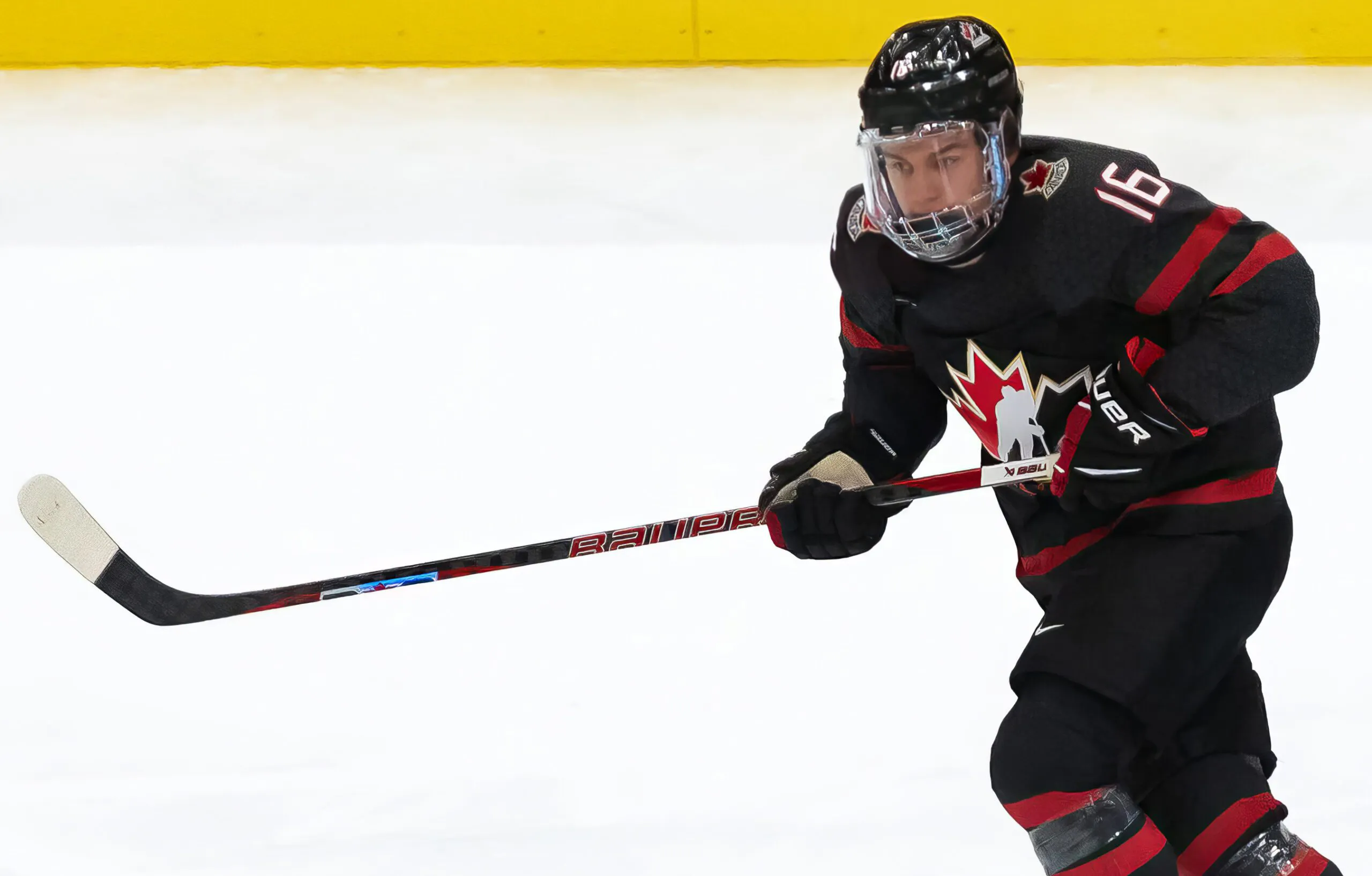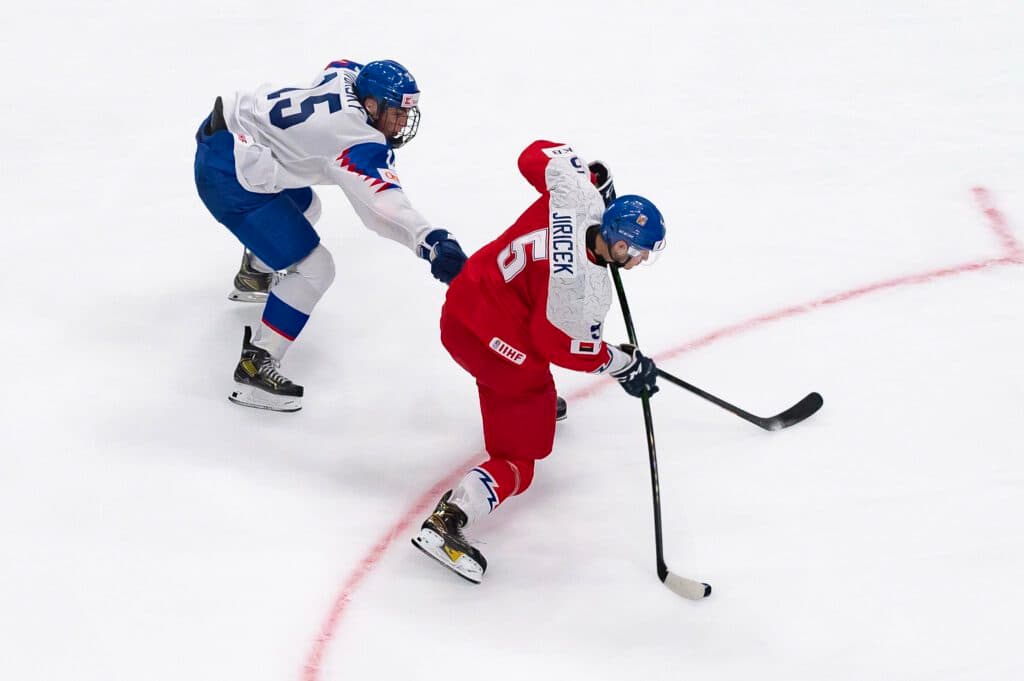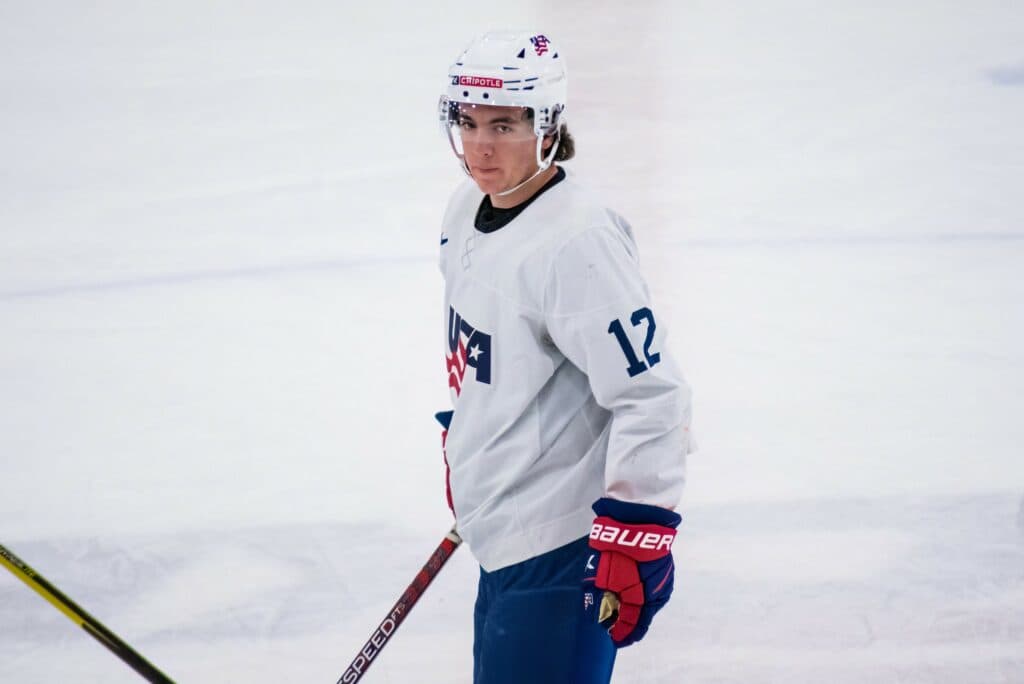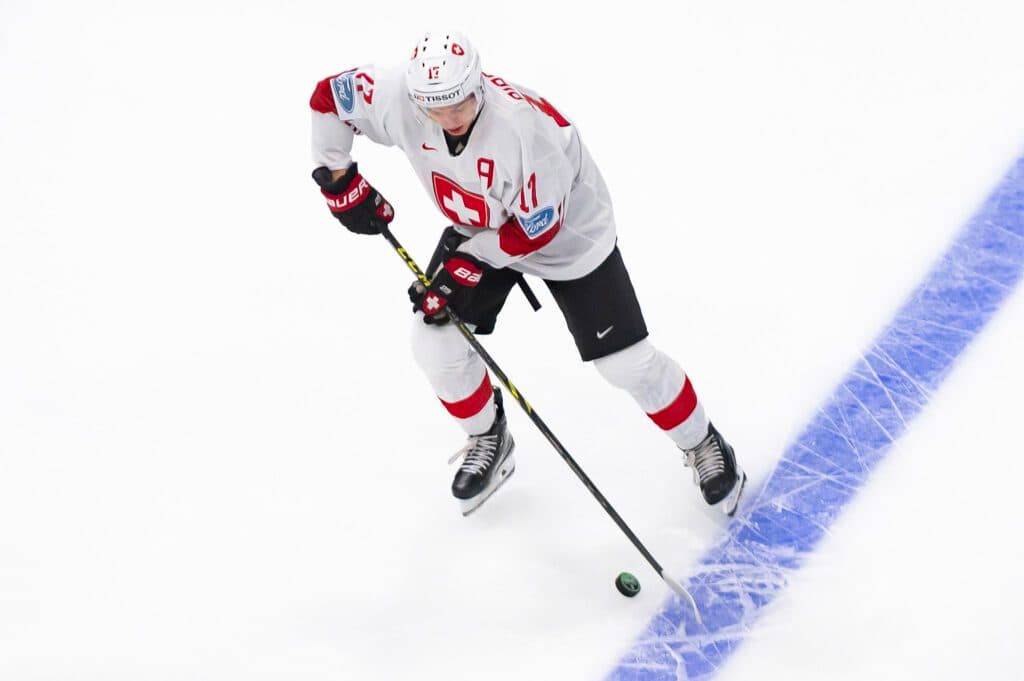2023 World Juniors: The top 25 standouts


Think you know sports? PointsBet Canada is live in Ontario!
_____
I think everyone needed the 2023 World Junior Championship to go perfectly.
After two years of unusual scenes – empty crowds in Edmonton; the tournament getting cancelled, only to be moved to the summer – the event finally returned to its roots in a junior rink in front of sold-out arenas nearly every single game. Halifax and Moncton were incredible hosts in a return to normalcy, and they pulled it all together just months after receiving the hosting rights from Russia.
After 30 games, it’s safe to say it was one of the best World Junior Championship tournaments of all time. From big upsets, teams rising above the norm and a pair of exceptional games to close it out, the event was incredible from start to finish. We saw Connor Bedard putting on one of the best tournament performances ever seen, a couple of undrafted goaltenders putting themselves on the map and some of the world’s top NHL prospects showing why they’re so well-regarded.
It was an excellent two weeks in Eastern Canada, so let’s take a look back at 25 of the top players from the 2023 World Junior Championship:
Connor Bedard, RW (Canada, 2023)
There’s nothing else that needs to be said here. Connor Bedard had one of the greatest tournament showings ever, as evidenced by his 23-point run. He broke various Canadian records, multiple U-18 scoring records and had, by far, the best run of any player in the 21st century. Not only did he prove he’s the top prospect in the draft, but he continued to show why he’s one of the best since Connor McDavid, if not THE best.
Logan Cooley, C (USA, Arizona)
In most years, Cooley’s play would earn him serious MVP consideration. Unfortunately, he had to deal with a generational forward stealing the spotlight every night for Canada. Cooley’s play was heavily criticized against Latvia and Slovakia, only for him to record nine points in the next three games. He had points in every single game and has points in every contest dating back to Nov. 17 with the University of Minnesota. The 2022 third-overall pick is one of the best prospects in the game right now and it won’t be long until he’s leading the next wave of Arizona Coyotes talent.
Jimmy Snuggerud, RW (USA, St. Louis)
Without Snuggerud, Cooley wouldn’t have been as dangerous as he was. Snuggerud had points in all but one game and had three multi-point efforts, with his four-point game against Finland being the highlight. Like Cooley, Snuggerud entered the tournament on a heater in the NCAA, and he showed what he could do both as a shooter and a playmaker. Snuggerud’s effort to fight off a Swedish defender to set up Cooley for the go-ahead goal early was a microcosm of what he’s capable of. He’s strong, creative and has an excellent shot – the Blues are going to love him one day.
Jiri Kulich, C (Czechia, Buffalo)
Named to the tournament all-star team, Kulich was a scoring machine for the Czechs – as expected. Kulich had seven goals (tied for second) and nine points total, building upon an impressive eight-point run from the summer. Kulich finds a way to thrive every time he puts on his national team’s uniform. Expectations were high for Kulich after an excellent start to the AHL season with Rochester, and the Sabres think highly of their 2022 first-rounder. Czechia’s scoring was varied, but Kulich’s ability to score in big moments – namely, the game-winner in the semis and the goal that sparked the comeback effort on Thursday – was vital.
David Jiricek, D (Czechia, Columbus)

Jiricek was a no-brainer for the tournament’s top defenseman, showcasing why he’s one of the best blueliners in the AHL. He was speedy, injected himself effectively into the attack and could match up with the best of them every night. Jiricek has the makings of a star defenseman in the NHL, and the Blue Jackets must be excited about his development so far. He had a quiet summer tournament in Edmonton, but he was excellent in all facets of his game – Jiricek looked like a man among kids out there. The Czechs didn’t win gold, but Jiricek did everything to try and change that.
Logan Stankoven, C (Canada, Dallas)
For the second consecutive year, Stankoven led the tournament in faceoff percentage, and he did so while being one of Canada’s highest-scoring forwards again. He finished with three goals and eight points, acting as a springboard for Bedard’s on-ice dominance. At 5-foot-8, Stankoven has punched above his size throughout his entire career and once he joins the Dallas Stars full-time, he’ll make everyone else look stupid for allowing him to fall to 47th overall.
Ludvig Jansson, D (Sweden, Florida)
For the second straight year, the Swedes found themselves with the highest-scoring player being a blueliner. Jansson is the latest, with the first goal of the game against Czechia in the semifinal being his fourth of the tournament and eighth point overall. Given he had just four goals in 92 Allsvenskan games, it was hard to see that happening. Jansson is definitely more of a defensive defender, but he seemed to unlock an offensive side nobody was expecting. Hopefully, that experience will carry over back home.
Cutter Gauthier, LW (USA, Philadelphia)
When Gauthier was really on his game, he was excellent. He had three multi-point games and generated five shots or more in all but two games. An electric goal-scorer, Gauthier showed more of his set-up man side and his value away from the puck, roughing up defenders to create scoring chances. Gauthier was the glue that kept USA’s top line of him, Snuggerud and Cooley rolling, reuniting one of the best USNTDP trios in recent history.
Stanislav Svozil, D (Czechia, Columbus)
If you’re a Regina Pats fan, you must have loved the tournament. Svozil, an offensive defenseman participating in his third world juniors, played his best one yet with eight points in seven games. Czechia’s captain was especially good early on with five points in the first two games, but he was one of Czechia’s most important blueliners, playing 19:33 a night. Jiricek may have earned more praise on the team’s blueline, but if any team is smiling right now, it’s Columbus – they selected Svozil 69th overall in 2021.
David Spacek, D (Czechia, Minnesota)
The Czechs loved to use their blueline to create offense, and Spacek – a fifth-round pick by Minnesota over the summer – was a significant stimulant. The Sherbrooke Phoenix defender had three goals and eight points, and was instrumental in setting up both of Czechia’s goals against Sweden on Wednesday. The Czechs relied on him heavily in the last two games and he was up for the challenge, often getting paired against Sweden and Canada’s top lines. Spacek was drafted in his second year of eligibility, but he’s showing some promising late-bloomer signs.
Tomas Suchanek, G (Czechia, 2023)
Not only did Suchanek register a tournament-record four assists, but he finished with the tournament’s second-best save percentage at .934. Suchanek played every minute of every game for the Czechs, a rarity at a tournament like this. So it’s a no-brainer why he won the tournament’s top goalie award, with his two games against Canada being his best. Suchanek has been passed over twice at the NHL Draft, but after two fantastic WJC performances, you’d have to think the third time’s the charm.
Thomas Milic, G (Canada, 2023)
Canada’s goaltending often only needs to be above average to steal wins. But Milic was a standout against Slovakia and USA, leading a Canadian team that showed some weaknesses at points. Benjamin Gaudreau was given the first start of the tournament, but Milic was lights out the rest of the way. His 43-save effort against USA was the difference as Canada advanced to the final, and he was just as good during the final against Czechia. It was a performance to remember for Milic, who, paired with an 11-2-1 record with the Seattle Thunderbirds, has been so hard to beat this year. Milic wasn’t a lock to make the team, and he’s been passed over twice before at the NHL Draft, but all eyes were on him in Halifax – and, perhaps, beyond.
Carl Lindbom, G (Sweden, Vegas)
There were very few NHL Drafted goalie prospects in the tournament this year, but most expected Lindbom – a seventh-round pick by Vegas in 2021 – to stand out. He delivered, posting a 4-2-1 record with a .914 save percentage. It’s too bad Lindbom was in net for all eight goals in the bronze because it soured an otherwise incredible tournament for the goaltender. He held the fort against Czechia before eventually falling short, but Lindbom was excellent. For a Swedish team that struggled to score, Lindbom pulled out lessons from Jesper Wasllstedt’s playbook in the summer and played some of the best hockey of his career. After putting up some great numbers with Djurgardens this year, Lindbom has emerged as a high-quality prospect – and the best goalie prospect the Golden Knights have had.
Adam Gajan, G (Slovakia, 2023)
After becoming a late addition to the roster and starting off as the third goaltender, Gajan stole everyone’s attention with his play in the round-robin. He then amplified it further by making 53 saves against Canada in the quarterfinal, giving life to a Slovakian team that otherwise would have gotten smoked. Gajan’s play earned the attention of NHL scouts who noted his ability to stand firm against quality competition and handle a heavy workload. Gajan stands tall at 6-foot-4 and is set for a college stint starting next season, something he should be able to adjust well to.
Leo Carlsson, C (Sweden, 2023)
The 2023 NHL Draft was well represented in Halifax and Moncton, and Carlsson was one of the leading forces. The 18-year-old had six points in seven games while playing in Sweden’s middle-six, with his two-goal game against the Finns being one of the main reasons why they made it to the medal round. He had some quiet moments and even missed a game with an illness midway through, but he didn’t look out of place as one of Sweden’s youngest players. He won’t have to wait long for his name to get called in June.
Sean Behrens, D (USA, Colorado)

Behrens’ game isn’t flashy, so it was easy to overlook the University of Denver defender. He got nearly all his points against Latvia, but his ability to play a more grounded defensive role beside the free-flowing Luke Hughes was noticeable if you looked a bit deeper. And that’s something that should excite Avalanche fans, especially alongside someone like Cale Makar, who loves to move the puck at an incredible rate. As other American defenders were more prone to mistakes when moving the puck, it felt like Behrens never had an off game.
Lian Bichsel, D (Switzerland, Dallas)
I’m not sure if breakaways are an actual publicly tracked stat, but Bichsel had multiple for a Swiss team that needed all the offensive help it could have. The big 6-foot-5 blueliner showed why he’s more than just a big body. He’s aggressive on the forecheck, can jump in front of the net and cause havoc and has a cannon of a shot. He only had two assists, but his hard work in overtime led to the game-winning goal against Finland and he was excellent against Latvia and Slovakia as well – both resulting in shootout wins. It’s a good thing he and the Swiss federation are friends again after a public feud that made it seem like he’d never play for them again.
Simon Nemec, D (Slovakia, New Jersey)
The future is bright in New Jersey, especially with Nemec and Luke Hughes at the helm. Nemec was excellent throughout the tournament, recording six points and being Slovakia’s most dangerous defenseman. His puck-moving skills, speed and smarts were on display throughout. He played perhaps his best game against Canada, helping to generate offense from the point. Nemec has shown excellent progress in Utica, but playing heavy minutes for a determined Slovak team benefited all parties.
Ryan Ufko, D (USA, Nashville)
No defenseman had more primary assists than Ufko – all eight of his helpers were, actually. He had a goal and an assist in the final, but his highlight was his five-point game against Germany to help USA advance to the semifinal. Ufko seemed to get favorable matchups and used that to his advantage, giving him 10 points in seven games. Ufko had been excellent as a second-year blueliner at UMass, and the Predators have to be thrilled about his development after taking him 115th overall in 2021.
Joshua Roy, LW (Canada, Montreal)
Roy will be remembered for the way he stood up when Canada needed him most against the United States. He scored twice and added an extra two assists, helping to break through after the Americans did an excellent job of shutting down Connor Bedard and Co. Roy is one of the QMJHL’s most dangerous scoring threats, but he was utilized more in a checking/energy role with Canada. He showed his versatility in Halifax after taking his game to a higher level than what he showed when he started on Canada’s top line at the summer tournament. Roy’s skating has come a long way since going in the fifth round in 2021, but there’s still room to improve. As a whole, though, he was excellent.
Filip Bystedt, C (Sweden, San Jose)
Someone needed to generate offense on the Swedes, and Bystedt was the guy who stood out among the rest. The big 6-foot-4 forward had a three-point opener before once again playing a big role in a tight win against Germany. He was one of the few bright spots in Sweden’s loss to Canada and was a catalyst in Sweden’s comeback effort against the Finns to get to the semifinal in the first place. Bystedt then scored a huge goal with just over a minute to go in the third of the bronze medal game, and while Sweden fell short, Bystedt was excellent.
Attilio Biasca, LW (Switzerland, 2023)

Few players needed to be as important to their team as Biasca, who had points in four of the five games. Passed over twice, Biasca averaged 23:27 through five games, the most of any forwards that made it into the quarterfinal. A lot of that is skewed by his 28:35 played against Slovakia in a 4-3 shootout victory, with Biasca recording nine of his team’s 36 shots that game. He was good in the pre-tournament too, recording a hat-trick against Sweden, and generally caught the attention of scouts that otherwise wasn’t impressed with his last two seasons in the QMJHL. You’d expect 19-year-olds to put points on the board in major junior, but there’s some real late-bloomer sleeper potential here.
Luke Hughes, D (USA, New Jersey)
Hughes had an up-and-down tournament, but when he was playing well, he was easily one of the best players in the game. Hughes has a tendency to try and do so much on his own, and that’s because he has the skill to make it work. His play against Slovakia was bad, but he progressively got more and more steady as the tournament wore on. There were high expectations from Hughes from the get-go, and USA’s coaching staff named him as one of USA’s top three players for a reason. Few U-20 prospects can keep up with him when he’s at top speed and he can absolutely dazzle with the puck. Defensive issues aside, there was a lot to like with Hughes and he’s not the reason USA lost in the semifinal
David Reinbacher, D (Austria, 2023)
It was easy to overlook Reinbacher given Austria’s poor play, but it’s clear how important he was. They got blasted by all the big Group A heavyweights, but Reinbacher held his own the best he could. The biggest indication of how important when was, though, came during the relegation round. The Austrians got slaughtered on the shot counter in Game 1 while he was sick, and then he contributed two assists in Game 2, which also happened to be a loss. So while there weren’t many reasons to get excited about Austria’s effort, Reinbacher – a projected first-round pick in 2023 – wasn’t the problem. If he returns to the Division IA team next year, the Austrians could find themselves back in the top group before long.
Dylan Guenther, RW (Canada, Arizona)
Most of Guenther’s damage was done on the power play, and having an elite teammate like Connor Bedard setting you up on the man advantage didn’t hurt. But he mostly played on the top line with Shane Wright and Brennan Othmann and was almost underrated, in a sense. Guenther had seven goals and 10 points, but the key thing was how the puck typically stayed in the opponent’s zone when Guenther was on the ice. According to Elite Prospects’ tracked data, he sat at a 71 percent Corsi-for percentage to put him in the top 10, three percentage points behind Bedard. Oh, and he scored the golden goal, too.
Other notables: Shane Wright, C (Canada, Seattle), Redmond Savage, C (USA, Detroit), Jakub Brabenec, LW (Czechia, Vegas), Gustavs Ozolins, D (Latvia, 2023), Joakim Kemell, RW (Finland), Filip Mesar, RW (Slovakia), Gabriel Szturc, C (Czechia, 2023), Maxim Strbak, D (Slovakia, 2023), Matyas Sapovaliv, C (Czechia, Vegas), Chaz Lucius, C (USA, Winnipeg).
Recently by Steven Ellis
- Canada beats Czechia to win gold at 2023 World Junior Championship
- IIHF wants NHL to commit to Olympic men’s hockey decision by 2024
- What makes Leo Carlsson one of the top prospects for the 2023 NHL Draft
- Adam Gajan’s play at World Junior Championship has caught the attention of NHL scouts
- Meet Trey Augustine, USA’s next top hockey goaltender
- What makes Connor Bedard one of the best NHL prospects since Connor McDavid
More from Steven Ellis
- 2026 World Juniors Preview: Is Team Canada back?
- Blackhawks’ Vanacker out to prove he belongs after late World Junior call-up
- Norway advances to top division of 2027 World Junior Championship
- Penguins’ goaltending depth has an opportunity to flourish following Tristan Jarry trade
- 2026 World Juniors Preview: Germany just hopes to stick around